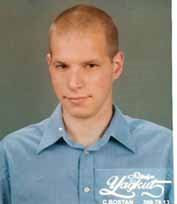Sanctions slow development of huge natural gas field in Iran
Increasingly tough international sanctions over Iran’s nuclear program have significantly slowed the county's most prestigious economic project, scheduled to rake in more than $130 billion in annual sales of natural gas after its completion.
Threatened by tougher international and U.S. penalties that target the financing of oil projects and technical support for Iran's energy sector, Western firms such as Shell, Total and Halliburton have pulled out of the development of the South Pars gas field. South Pars is the Iranian portion of a natural gas reservoir about two miles below the Persian Gulf between Iran and Qatar. The reservoir is the world's largest gas field, covering 3,745 square miles and containing an estimated 1,800 trillion cubic feet of gas. About 38 percent of it lies below Iran's territorial waters.
On Saturday, the engineering and construction arm of the Revolutionary Guard Corps, Khatam ol-Anbia, which is also under new U.N. and U.S. sanctions, unexpectedly withdrew from two key gas refinery projects. It also refrained from bidding on the three final parts of the South Pars gas field, said Mohammad Hassan Mousavizadeh, a technical adviser to the state-owned Pars Oil and Gas Co.
"In the present circumstances, it is possible that continued activity … will endanger national resources," Khatam ol-Anbia said in a statement after the pullout.
Industry sources said the projects were lagging behind schedule because foreign banks were not providing financing. By pulling out, the Revolutionary Guard hoped to head off further delays, the sources said.
China Petroleum & Chemical Corp., known as Sinopec, and Malaysia's SKS Ventures have taken over some parts of the projects, but the bulk of the work is now done by little-known local consortiums, some of them affiliates of the Guard's construction arm. Others belong to banks and the state.
In addition to problems obtaining financing, the companies face difficulties in procuring key instruments and hiring drilling rigs, industry insiders said. In part as a result, Iran's objective of becoming a major producer of liquefied natural gas has been scaled down. Officially, Iran has blamed "a worldwide drop in demand for the product."
Qatar, the Arab emirate that shares the gas field with Iran, exported $62 billion of mainly gas products in 2008, while Iran's gas exports brought in about $6 billion. But Iran's potential profits are huge, project managers said. They estimate that Iran could earn up to $130 billion a year from natural gas, eclipsing crude oil sales, which the U.S. Energy Information Administration pegged at $53 billion in 2009.
At the South Pars site, the number of workers has dropped to 20,000, down from a peak of nearly 100,000 when several projects were underway.
"Roads, bridges and airports have all been finished," Mousavizadeh said. "The best thing is that we are all doing this by ourselves."
A similar drive for self-sufficiency in developing Iran's nuclear sector -- and the resulting sanctions aimed at curtailing its uranium-enrichment program -- have changed the face of the South Pars project.
Road signs leading to Asalouyeh, the Persian Gulf town that hosts the project, used to say "Welcome to the economic capital of Iran." Now visitors are greeted with slogans such as "South Pars is the manifestation of national resolve."
During a rare visit to the site by reporters this week, small groups of workers in blue shirts could be seen welding pipes and pouring concrete. Looming over them were large posters of Iranian clerical leaders with the slogan "We are able." Only one ship was docked at Asalouyeh's port.
President Mahmoud Ahmadinejad's government, which has adopted a confrontational approach toward the West, has designated the South Pars project as a symbol of national will that exemplifies the capabilities of a resilient nation under siege. Ahmadinejad, who visited Asalouyeh in June, has demanded that all projects be finished within 35 months, a goal that could be difficult to achieve, because many of the project sites currently show no signs of activity.
"Of course we will work faster with Western companies involved," head engineer Sohrab Ghashqai said in English. "But at least now we are educating our young engineers."
But some of those young engineers say that jobs in South Pars are no longer the career stepping stones they once were.
"Working in South Pars meant good pay and interesting work," said one engineer who worked at the site for two years. But jobs dried up with the departure of foreign companies, salaries quickly dropped, and housing conditions in the Persian Gulf heat became intolerable, he explained.
"I left disillusioned," he said. "There is so much potential, but we are not exploiting it."
http://www.enerjivadisi.com/n.php?n=guney-pars-sahasindaki-yatirimcilar-yaptirimlardan-ne-kadar-etkilendi-2010-07-27


0 Comments:
Post a Comment
<< Home